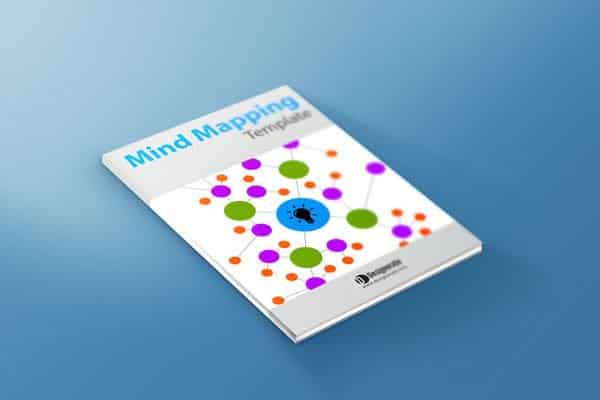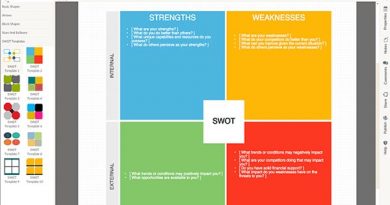How to Use Mind Mapping for Better Thinking
During brainstorming meetings and problem-solving sessions, many outputs are shared and presented in fractals. Many of the design thinking methods we discussed aims to direct the attendees thinking towards a specific flow in order to achieve creativity or find innovative solutions for problems. Mind mapping is one of the efficient methods that organize all these in a formation and in a visually brain-friendly method.
When we are thinking of an idea, taste a specific food or visit a place, our mind starts to link this action with our memories and previous experience using a relevant model. Our brain starts with one center action, color, taste or image and builds branches of thoughts that are used as a base for other multiplied ideas. How we think works very similar to tree branches. This concept is used as the basis for all mind mapping systems and approaches.
Download the free mind mapping PDF template at the end of the article.
Related articles:
- 10 Online Mind Mapping Tools for Designers
- How to Run a Successful Brainstorming Session
- Inspired Lessons from Da Vinci’s Creative Thinking Methods
- Brainstorming Multiple Ideas Using Charette Procedure
The usage for visual recording of ideas was first used in the 3rd century by Porphyry of Tyros to visualize concepts and theories from Aristotle and Ramon Llull. However, it is introduced again as one of the thinking methods by British psychologist, Tony Buzan. All mind mapping techniques follow similar guidelines:
- It starts with a single idea that is represented with text, color or image. Each idea should be presented with one single word and use visual elements to categorize it such as, upper an lower words, colors, codes and images.
- More subsidiary ideas are added around the main idea and connect with it by lines. All the branches should have connection lines that link it with the center idea.
- Unified hierarchy styles should be implemented through the mind map. This style uses different visual elements to organize ideas.
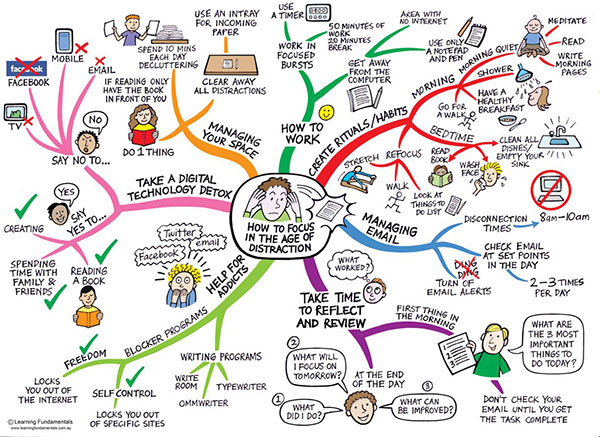
When to Use Mind Maps?
As mentioned above, mind mapping is identified as one of the efficient tools to think and analyze ideas and their related topics. Therefore, the mind maps can be used in various situations –especially during the ideation and brainstorming stage. Mind mapping can be used to achieve the following:
- Taking note during individual or group meetings. It can be used to summarize discussions or create a to do list.
- Brainstorming ideas and find innovative solution during meetings
- Break down complex problems and idea into simpler and easy to follow fractals
- Analyze and process information collected during the research process
- Present information in a creative and easy to follow format
The above applications for the mind maps are generic and can be applied inside companies, organization and education institutes, as we will explore later.
How to Use Mind Maps?
Applying mind maps flow from a number of steps that drive the mind thinking from simple core idea and radiate into a more complex structure. The steps below provide an example of mind mapping for supplying solar energy service to rural village:
Step 1
Type the topic title using one keyword “solar energy” in the middle of the page or board similar to figure 1
Step 2
Start to write down the main topics related to the idea and use a line to connect the topics with the main keyword similar to figure 2. In this example, the topics can be “consumer”, “cost”, “delivery”, “benefits” and “barriers”.
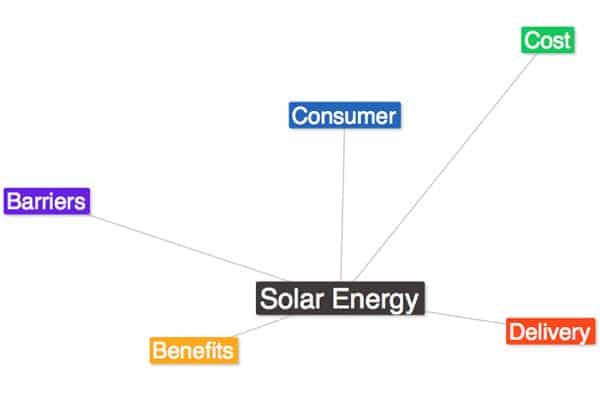
Step 3
Start thinking of each topic and write down the sub-topics to branch from the main topics. For example, the “consumer” branch can include the following sub-topics: “demographic information”, “knowledge”, “expectations”, “acceptance”. Figure 3 indicates the different sub-topics for each main branch.
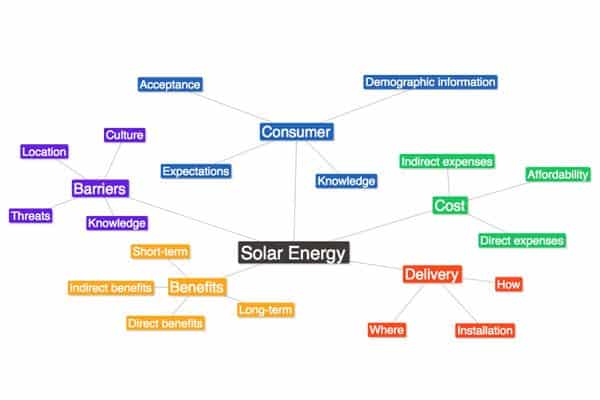
Step 4
Continue to add more ideas based on the flow mentioned above. Then, organize these ideas together to have a proper connection between each other and the main center point or idea. The final shape may look like figure 4 below.
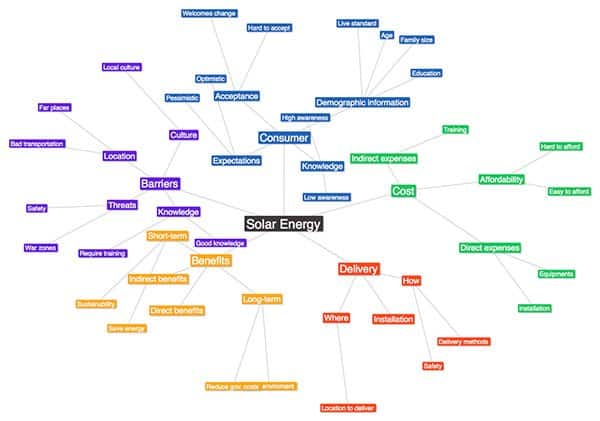
In order to achieve the best outcome from the mind mapping model, the following tips should be considered:
- Use single keywords rather than long text, this action helps you to focus on one single idea per step and simplify topics into smaller parts.
- Use legible and clear words in order to make easier for the attendees to read it.
- Use visual elements such as colors, shapes and icons to represent ideas
- Link between different parts of the mind map by drawing links between related topics.
Although mind maps follow a general flow of steps, the usage of a unique style in drawing the branches to visualize the linkage between ideas improves the performance of the brainstorming session. Each mind map should have a unified style to define elements and the linkage between them.
Using Mind Mapping in Business
As mentioned earlier, mind maps can be used in various sectors including business and education. Mind mapping improve employees ability to understand ideas and collaborate during meetings. In a research by Chuck Frey, mind mapping expert, employees who use a mind mapping method believe that their productivity increased by 25 percent. In the business sector, mind mapping can be used to achieve the following:
- Efficient meeting time and communicating ideas
- Increase productivity through better thinking methods
- Support the project management process as it can integrated with the project management planning
- Improve communication and collaboration inside and between teams
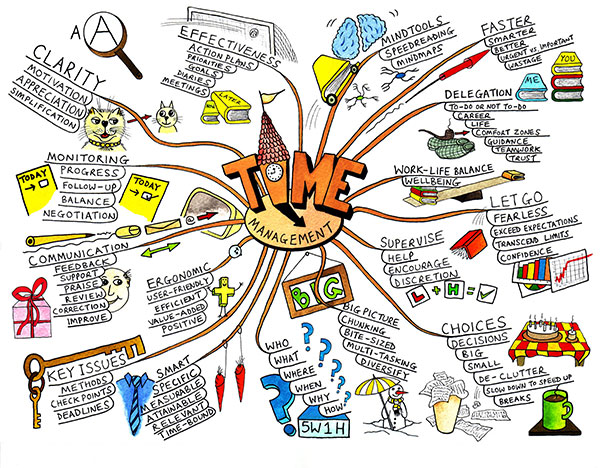
Using Mind Mapping in Education
Unlike traditional teaching in classes, visualizing ideas through mind mapping help students to think better and separate complex problems into simpler topics. It helps students to understand and analyze ideas through visual elements and colors. Most students face problems in order to organize their thinking flow, therefore tools such s mind mapping can help them to a better thinking experience through the coherent process to analyze problems and situations. Generally mind mapping can be used in schools in the following activities:
- Brainstorming and creative thinking sessions
- Analyze research and projects
- Find innovative solutions for projects
- Training in decision making and understanding problems
Mind Mapping Software
The most efficient methods to use to apply mind mapping is to use a normal white board and drawing markers, this helps attendees to visually focus on each drawn shape. However, mind mapping software and tools can provide more options that are not available in the traditional ways. The results can be easily downloaded as an image or shared with other applications such as Microsoft Word and PowerPoint. Additionally, mind mapping software provides ready elements and clear text that can be easily followed by the attendees.
Below is a list of the different mind mapping software and tools that can be used for the brainstorming sessions:
- Creately, online mind mapping tool that provide mind mapping templates.
- Text 2 Mindmap, free mind mapping tool that can easy create tree diagram using a drag and drop function.
- Mind Genius, desktop mind mapping software that is compatible with Windows computers and integrates with MS Office and MS Project
- Matchware, another desktop mind mapping software that is available for both Mac and Windows computers. Also, it is available in different languages.
- Xmind, is a free mind mapping software that can be used for both Mac and Windows. It allows integration with other applications such as Evernote, MS Project and Open Office.
- MindNode, this tool can be downloaded on Mac, iPhone and iPad.
- Coggle, this is another online mind mapping tool that can help you take note and brainstorming. Also, it includes the function to track history and share information.
- Mindjet, this is a sophisticated mind mapping tool that allows people to brain storm along with managing projects. It is a framework to brainstorm and manage projects using mind mapping. It is available for Windows, Mac and iOS.
Conclusion
Mind mapping is one of the efficient method to organize ideas and analyze complex situations through breaking things down into smaller parts. It can be used along or with in collaboration with other design thinking methods. Mind mapping can be applied in different sectors including business and education to achieve goals related to better thinking and collaboration between employees or students. While the traditional white board and marker is one of the efficient methods to brainstorm, mind mapping software and tools provide more functions and capabilities such as saving produced mind maps in different format and integrating them with other applications such as MS Office and MS Project.


